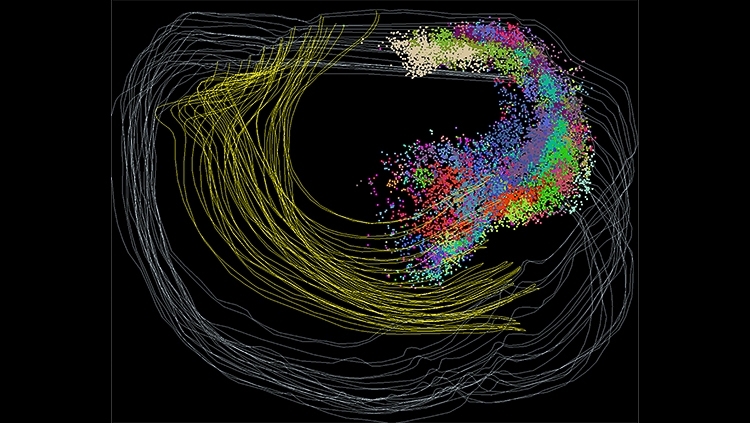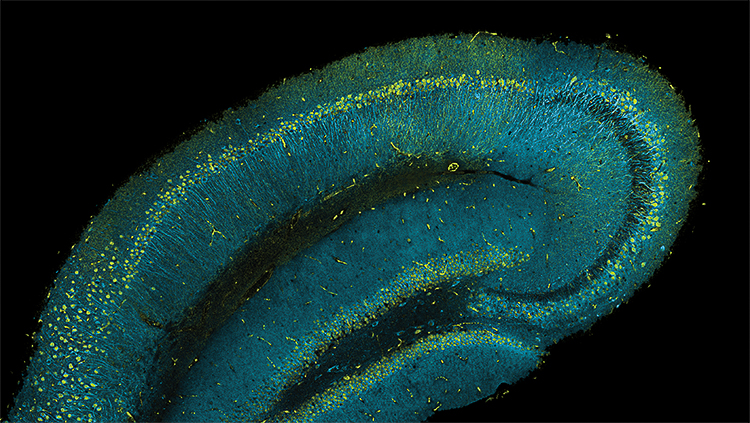Chapter VI: The Challenges of Reassessment and Change, 1998-2006
In the mid-1990s, SfN could claim a growing and diverse membership, a strong volunteer leadership, and a record of success in building public recognition and support for the field of neuroscience. But, as the new millennium approached, the leadership began to recognize that the Society’s structure and governance were not keeping pace with its growth and mission. Membership plateaued between 1996 and 2001; the financial reserve grew more slowly; tensions developed between the volunteer leadership and staff. SfN faced major challenges ahead, in coping with its own size and increasing diversity, in developing a professional governance that promoted smooth working relationships, in ensuring financial security to develop new programs, in maintaining public and government support for basic research, and in keeping up with the rapid pace of technological and social change. As Eve Marder (President 2007–2008) has commented, SfN as an organization parallels the adult nervous system: It must be both plastic and robust, and this is a never-ending challenge both for the permanent staff and its scientific leadership.238
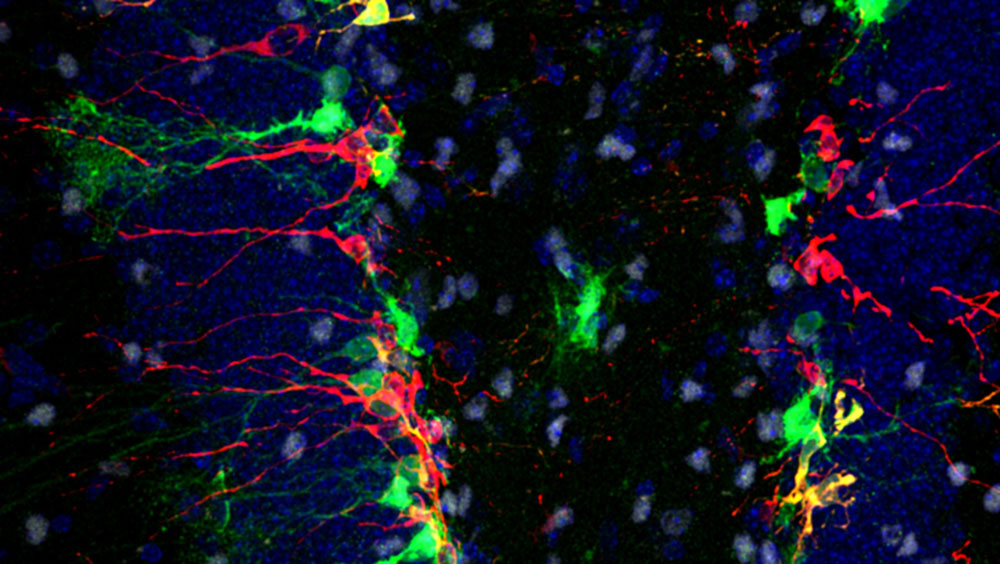
Presidents Edward “Ted” Jones (1998–99) and Dennis Choi (1999–2000) were among the key early leaders who recognized that SfN’s rapid growth, increased global reach, and technological sophistication had outgrown the small-scale governance, staffing, and financial arrangements that had been developed as needed, and often improvised, since 1969. Choi recalled his surprise on becoming SfN Treasurer in 1998 that “an organization that was as scientifically robust and successful as the SfN had been for many years, was actually…running on a pretty lean budget and really at risk to financial red ink should a single Annual Meeting go down for, say, weather conditions.” With President Lorne Mendell and President-Elect Jones, he took on the task of improving the Society’s financial status, a project continued during his own presidency (1999–2000) and then later with the development of SfN’s first Strategic Plan and with new executive leadership from Marty Saggese, under Presidents Price, Gage, and Akil. “[The leadership] was going to have to roll sleeves up and chart some new directions, even though we all knew this was going to be a lot of work, and it was.”239
Jones and Choi discussed with Council at the Fall 1999 Annual Meeting the problems that had developed when decisions had to be made in the months between the spring and fall Council meetings. SfN had not “grown out of the informality” of the early days, when these were resolved by the Executive Secretary (now the Executive Director) calling the President. The Executive Committee(EC), consisting of the President, Immediate Past President and President-Elect, had been formed to respond to the animal research problem in 1987 and had taken on many operational decisions since then, but the lines of authority were not clear: which decisions could be made by the Executive Committee, which by office staff, and which should be reserved for Council?240 The results were an amendment to the bylaws to delineate the EC’s responsibilities and the creation of a select Self-Assessment Committee (SAC),chaired by Future Treasurer Ray Dingledine, and including Past Presidents Gerald Fischbach (1983–84), Patricia Goldman-Rakic (1989–90), and Bernice Grafstein (1985–86).The SAC, judging that SfN’s governance had become “too amateurish” for an organization of its size and scope, developed a working set of principles and goals, interviewed other past presidents, and hired an outside consultant to advise on the next steps.241 The SAC’s report in 2000 and the consultant’s in 2001 launched a series of significant changes in the early2000s, begun under Presidents Don Price, Fred “Rusty” Gage, and Huda Akil: a new membership survey, the development of a Strategic Plan for the Society, the creation of a new committee structure, and an investment strategy, and the purchase of a permanent headquarters building.
Transforming SfN Governance
2001 also saw the retirement of SfN Executive Director Nancy Beang after 20 years of service. The Council retained Auerbach Associates to coordinate the search for a new Executive Director; Auerbach, working with the Search Committee, identified seven goals for the new Executive Director to address. These included staff education, policies, and procedures; reorganization of the staff and Society governance for greater efficiency; and strategic planning.242 At the November 10, 2001 Council Meeting, President Donald Price announced that Marty Saggese had accepted the position and would begin his tenure in January 2002.243
Saggese came to the Society after a twenty-year career in government and non-profit management, attracted by the opportunity to manage SfN’s organizational structure in order to maximize its ability to achieve its mission.244 His perspective that “non-profit is a tax status, not a business model” helped the volunteer leadership transition to adopt a new financial approach that generated income for immediate use to support Society programs and to develop initiatives to serve the members while building financial strength to allow the organization to survive and prosper in perpetuity.
Saggese implemented a number of procedural and structural changes in his first few years to meet the initial executive goals defined by the Search Committee. He reorganized 12 staff departments into 5 divisions under senior directors to support SfN programs and facilitate coordination between the volunteers and professional staff.245 In 2003, Council agreed to shift the Society’s fiscal year from January–December to July–June so that the Annual Meeting would fall earlier in the cycle, making it easier to predict Society expenses and manage cash flow through the fiscal year.246 That year, Council also accepted the Finance Committee’s recommendation to implement a tiered structure for SfN’s Sustaining Associate Membership category for industry partners while continuing to cultivate their sponsorship of SfN prizes and awards at the Annual Meeting.247
The SfN Council, acting on the recommendations generated by the SAC, commissioned a new membership survey to determine member priorities; conducted extensive interviews with current and former Council members, committee chairs, and staff; and consulted with the firm of McManis and Monsalve to assist with developing the Society’s first Strategic Plan. In contrast to the membership surveys conducted in 1982 and in 1995–96 that had focused on collecting demographic information, the 2002 survey asked “members to rate the importance of various Society programs and benefits as well as the quality of its services” in order to clarify SfN’s “goals and initiatives.”248
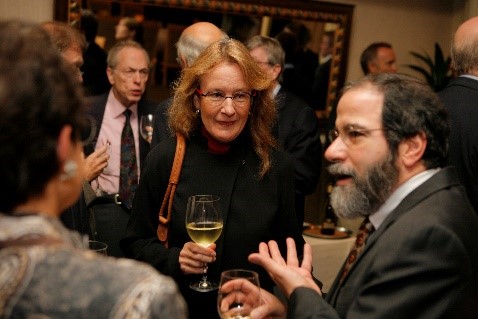
Nearly 20% of the membership (5,646 individuals) responded to the digital survey. While SfN leaders were heartened to learn that the members overwhelmingly felt that the Society was “embarking on the strategic planning process from a position of considerable strength,” and gave high approval ratings to the Annual Meeting and The Journal, respondents did identify several areas for enhancement and improvement. SfN members urged the leadership to take steps to strengthen communication with the members, to provide career support services, to take a stronger stance in support of public policy issues, and to establish the Society for Neuroscience as an “authoritative source on brain science” for the general public. Simultaneously, many members expressed a desire to become more actively involved in local chapters and in national committees, indicating that SfN could tap into a strong pipeline of energetic future leaders.249
The Council used the feedback obtained to put together a new Strategic Plan for SfN that aligned the financial goals of the Society with its core mission and values.250
The plan focused on four major goals:
- Promote continued development of the field of neuroscience, the integration of research, and translation of discoveries to clinical treatments.
- Provide improved professional development services and educational resources for neuroscience students and scientists at different stages of their careers.
- Expand and improve general public information and education about neuroscience.
- Strengthen SfN’s role and influence in public affairs and advocacy.251
While none of these priorities were new goals for the Society, their clear articulation helped SfN leaders ensure that current and future activities remained in line with member values. Over the next two decades, the 2002 Strategic Plan became a useful benchmark for measuring the success of various programs as well as a working yardstick to evaluate whether a proposed program promoted the goals and reflected the values of the organization.
The Strategic Plan required a shift in SfN governance and the leadership implemented this transition in several stages over 2003–4. First, Council revised the Society bylaws to accommodate a more flexible committee organizational structure and to define clearly the relationship between the Central Office, Council, the Executive Committee, and the various Committee Chairs.252 The new organizational scheme included the formation of five temporary working groups of SfN members to develop work plans to implement the goals of the Strategic Plan.253 The working groups focused on Annual Meeting initiatives; strengthening Society publications, including The Journal of Neuroscience; professional development and educational programs throughout the year; public education initiatives for neuroscience literacy, including Brain Awareness Week and Brain Facts; and public affairs and government advocacy.254
In addition to these working groups, Council established a standing Committee on Committees (CoC) to oversee the nomination of councilors, committee chairs, and committee members.255 As Thomas Carew (President 2008–09) commented, “Neuroscientists are not great at obeying the rules all the time, and so at some point there was this kind of complexity that required a coordination. And this Committee on Committees was just that.”256
In 2005, under the leadership of President Carol Barnes and CoC Chair and Secretary Irwin Levitan, Council expanded on the success of the working groups and reorganized SfN’s standing committees into five clusters: Financial Management; Information; Membership Development and Benefits; Professional Development, Mentoring, and Diversity; and Public Outreach. The chairs of each committee met as the cluster steering committee to reduce redundancy and improve coordination of programs and scheduling.257 In the years following the creation of the CoC, the efficiency of the Society’s governance improved significantly, with occasional updates to the committee clusters to reflect periodic reevaluations of the Strategic Plan.
Developing SfN's Financial Strength and Leverage
SfN leaders under Presidents Lorne Mendell, Edward Jones, Dennis Choi, Donald Price, Fred Gage, and Huda Akil also made several key decisions as the new century dawned to ensure the financial well-being of the society in the face of stagnant membership numbers and flat income from dues and to cope with the increasing costs of producing a high-quality scientific journal in the Internet age. The original financial and organizational structure of the Society had worked well when the Society was smaller, but the new policies and procedures reflected the needs of a larger, more diverse, and more digitally focused organization.
Council members had been concerned for some time that the Society did not have enough reserve cash to weather a crisis, and the Finance Committee had engaged a series of investment advisors to strengthen SfN’s financial state with varying degrees of success.258 By 2000, the Society had built up enough in reserve for one year of operations (approximately $9.3 million) for the first time, but its solvency was still vulnerable to market volatility; therefore, the Finance Committee made the critical decision to articulate a coherent investment policy to enable SfN to make rational financial decisions going forward.259
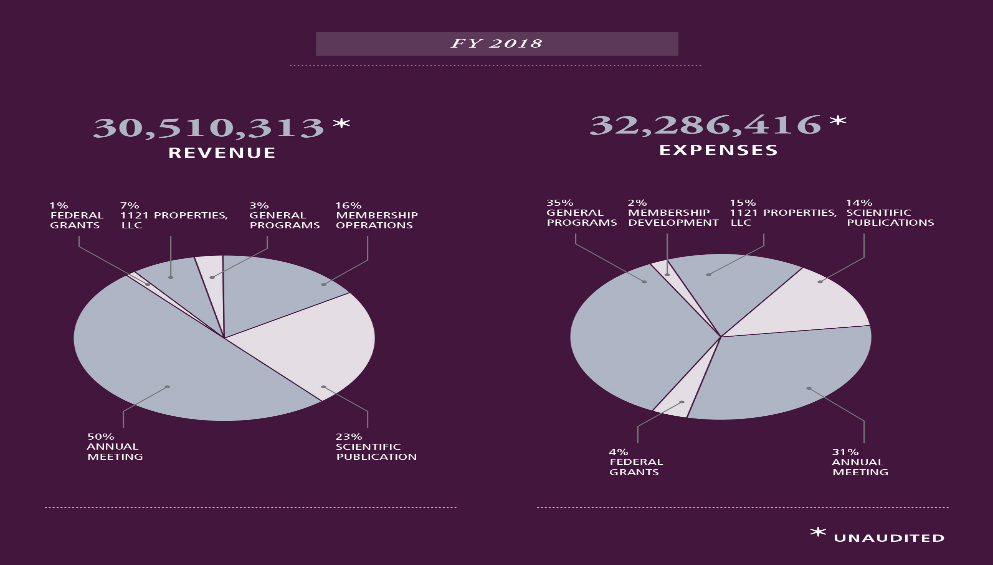
In November 2000, Council approved the creation of a separate ad hoc Investment Committee to consult with financial advisors and recommend investment strategies to ensure the maintenance of sufficient reserves. David Cohen, (who as SfN President in 1981–82 had initiated the Society’s first Long Term Planning Report) became chair of the committee in April 2001 and recruited a number of SfN members and outside financial experts who were interested in science to serve on this committee.260 Treasurer (and President-Elect) Huda Akil highlighted the need for substantial reserves at the November 2001 Business Meeting, when members discussed the establishment of the Investment Committee as a standing committee of the Society. She pointed out that, if the devastating events of September 11, 2001 had instead occurred in October, forcing Council to cancel the Annual Meeting, the Society would have “incurred millions of dollars … of loss,” a potentially devastating financial blow.261 While the Investment Committee has updated its focus periodically to reflect the Society’s priorities, it has consistently sought and implemented sound financial strategies that have protected SfN from market volatility.
The leadership also recognized that “money is the engine” that made the scientific mission of the Society possible; that each revenue stream had to be nurtured so that no sudden changes in fees or emergency fundraising drives would be required; and that a healthy reserve created leverage for SfN in dealing with vendors, grantors, and collaborators.262 Finance and Administration was one of the five major divisions created at the central office in 2001; the Investment Committee later joined the Finance and Audit Committees in the Finance Cluster.263
The appointment of a staff Financial Officer and careful use of technology and data management were also critical. While the replacement of hardcopy meeting programs, publications and onsite training sessions with online abstracts and the meeting app, online journals and webinars have created member value at reduced costs, the flexibility of online data has also improved financial forecasting, planning and budgeting; as CFO Cori Spencer commented in 2019, “[W]e are trying to incorporate data analytics in every aspect of our decision making.”264
Under this careful management, revenues grew from $20–22 million to $32 million annually and the financial reserve increased to more than $78 million (as of February 2020), ensuring the organization’s future solvency.265 The Annual Meeting, The Journal of Neuroscience, and membership dues remained the major sources of Society income, but the relative breakdowns changed in the 2000s and 2010s. In 2017, the Annual Meeting contributed 50% of yearly revenues (with support from more than 30 outside organizations), while drawing only 31% of expenses; The Journal and other publications contributed 23% to revenues and drew 16%; while membership dues, which had been almost 21% of income in 2005, now represented only 16%. “General Program” expenses, meanwhile, SfN’s investments in member training programs, public education and advocacy, grew from 21.5% of the budget in 2010 to 35% in 2017.266
While the decision to move The Journal in-house and the purchase of the headquarters building (see a permanent home) have contributed to SfN’s financial health, these initiatives were possible due to the organization’s existing strength, contributing to its ability to negotiate the best terms.268 The value of stronger financial management was borne out in many other instances. For example, in fall 2013, Council approved the creation of a Strategic Investment Fund to draw up to 1% from the reserve over three years to fund new initiatives, the first of which was eNeuro.269 In approving a three-year budget plan in summer 2016, Council agreed to freeze membership dues and publication fees for two years, recognizing the “continued financial pressures” facing many scientists and to continue strategic investments to support key innovations and avoid the necessity of increasing member costs.270 These and similar initiatives demonstrated the success of SfN’s good financial management and its long-term potential for survival and growth.

A Permanent Home on 14th Street
The most visible change for SfN in this period was the decision to buy a headquarters building rather than continue to rent office space in Washington, D.C.271 With the lease on the now cramped offices at 11 Dupont Circle due to expire in three years, the SfN Council under the leadership of Presidents Fred Gage and Huda Akil began to explore the idea of buying a building in 2002. The next year, President Anne Young set up an ad hoc committee on real estate and appointed then President-elect Carol Barnes, Treasurer Richard Huganir, Treasurer-elect William Greenough, Past Treasurer Ray Dingledine, Investment Committee Chair and Past President David Cohen, and Councilor Nancy Wexler.272 If SfN occupied a few floors at the new location and rented out the remaining space, the income generated would be available for member programs, while the Society would retain the flexibility to expand its offices as necessary. Thanks to the efforts of the Investment Committee, SfN was in a strong financial position and able to secure “highly preferred lending rates” for the mortgage on the building. Once the Society had purchased the new site on 14th Street, the real estate committee chose Envision Design (now a division of Perkins and Will) to design SfN’s new office space as a “green” space that “incorporate[d] principles and materials that seek to provide environmentally sensitive, healthy, and productive workplaces.”273 In 2006, SfN’s office space received Gold Level Certification from the Leadership in Energy and Environmental Design (LEED)’s green building rating system, a recognition also awarded to the entire building in 2010.274
The new offices also provided an opportunity for neuroscientists to collaborate with architects on creative designs that reflect neuroscientific concepts. The main office is inspired by neuroscience. The huddle rooms – “Amygdala,” “Cerebellum,” “Hippocampus” and “Striatum” – are laid out according to the position of each section in the brain, while the main conference rooms, “Axon” and “Dendrite,” combine to form a larger “Neuron” meeting space.275 The centerpiece of the SfN office is a dramatic three-story mural depiction of Santiago Ramón y Cajal’s historic drawing of the mouse neocortex, designed and constructed in collaboration with students from the Catholic University of America’s School of Architecture and Planning Design Collaborative. As Carol Barnes commented, “The three stories just lent itself to…the sixlayer cortex.”276 At the gala grand opening on May 5, 2006, SfN past presidents, government officials, representatives from the Spanish and Italian embassies, NIH and other scientific leaders, and Ramón y Cajal’s family members including his great-granddaughter Teresa Ramón y Cajal Asensio joined in dedicating the new building.277
Throughout these transitions, SfN Presidents Dennis Choi, Donald Price, Fred Gage, Huda Akil, Anne Young and Carol Barnes, assisted by a strong Council and volunteer leadership and with the input of Executive Director Marty Saggese, admirably balanced the current and future needs of the organization. Membership grew 50% between 2001 and 2011, to a high of 42,576, before beginning to plateau at around 37,000 over the next few years.
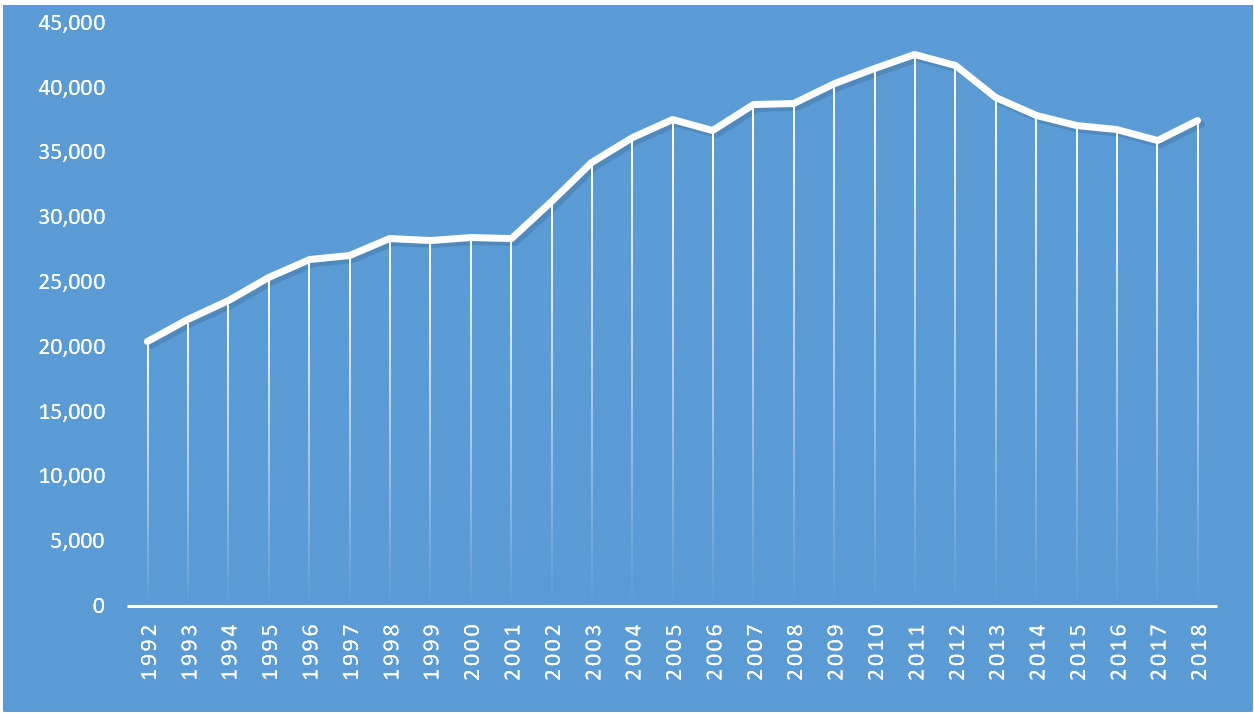
The SfN Council and Executive Committee made well-informed, responsible decisions in the new millennium that ensured that the Society would be able to meet the needs of its members for many years to come. At the same time, SfN volunteers and staff continued their strong advocacy of science and research support and provided legislators and the public with high quality, reliable educational materials about the brain.
Related
Endnotes
- "Eve Marder" in Thomas D. Albright and Larry R. Squire, eds. History of Neuroscience in Autobiography vol. 10 (2018), 420-455, p. 448.
- Interview with Dennis Choi, November 5, 2018.
- SfN Council Minutes, October 23, 1999,
pp. 20–26; - SfN Council Minutes, October 27, 1999, p. 6, p. 14, and November 4, 2000, p. 13. The consultant hired by the SAC was Steve Carey of Association Marketing and Management Resources.
- The Search Committee, consisting of Joseph Coyle, Fred Gage, Don Price, Huda Akil, Patricia Goldman-Rakic, Kristen Harris, Bruce McEwen, Carla Shatz and Sol Snyder, met with and interviewed nine candidates in Boston and four in D.C. SfN Council Minutes, November 10, 2001; SfN Council Minutes, April 25, 2002, p. 1–4.
- “ Search for Society Executive Director Under Way” NN 32 (May/June 2001): 1; SfN Council Minutes, November 10, 2001, p. 1; “New Executive Director Joins Society” NN 33(January/February 2002): 1.
- “ First Impressions: An Interview with Marty Saggese,”NN 33 (March/April 2002): 6.
- “ Society for Neuroscience Reorganizes Structure of Central Office,”NN 33 (July/August 2002): 8. The new divisions were Planning & Membership, Communications & Public Affairs, Finance & Administration, Scientific Programs, and Meeting Services. As of 2012, SfN employed 102 staff in 16 departments under Saggese and five directors.
- SfN Council Minutes August 5, 2003, p. 3, item IX; SfN Council Minutes October 22, 2004, p. 1, p. 5. SfN Archive.
- This membership category had been in place since 1973, and was primarily made up of pharmaceutical companies. The expansion with Gold and Silver level memberships was reflected in the list of Sustaining Associate Members published in the back of the Neuroscience Quarterly, starting with the Summer 2003 issue. A non-profit category
was added the next year. See “New Associate Members,” NN 4 (September 1973), p. 2; Council Meeting Minutes November 7, 1973, p. 5; Fall Council Meeting Minutes November 7, 2003, section VII; “SfN Receives $650,00 from the Eli Lilly and Company Foundation for Award Honoring Julius Axelrod,” NQ Winter 2007, p. 23. - Fred H. Gage, “Message from the President,” NN 33 (May/June 2002): 3.
- “Membership Survey Results” and “SfN President-Elect Huda Akil Discusses Membership Survey,” NN 33 (September/October 2002): 3, 6.
- “ Strategic Plan,” SfN Council Minutes November 14, 2001, p. 11-12, SfN Archive; Gage, “Message”; Fred H. Gage, “Strategic Planning Initiative” NN 33 (September/October 2002): 1–2.
- Gage, “Strategic Planning Initiative,” p. 2
- Summary based on SfN Council Minutes August 2002, p. 2–6. The current by-laws (http://www.sfn.org/About/What-We-Do/Bylaws) were revised in 2008.
- See for example, SfN Council Minutes August 2003, p. 3–5.
- “Working Groups will Implement Goals of Strategic Plan” NQ Winter 2003: 12–13.
- “Committee on Committees Formed,” NQ Winter 2003:9.
- Interview with Thomas Carew, November 3, 2018.
- “ SfN Council Approves Committee Realignment, Adds Clusters”NQ Spring 2006: 5; Interview with Irwin Levitan, November 4, 2018.
- See for example, Treasurer’s Report, SfN Council Minutes, April 15, 2000, p. 7, SfN Archive.
- Treasurer’s Report, SfN Council Minutes, November 4, 2000, p. 11–12; Business Meeting Minutes,
November 2001, p. 2. - Society Finances Report, SfN Council Minutes, November 10, 2001, p. 7, SfN Archive; “President’s Message,”NN 33 (January-February 2002): 12; See also “Planning Ahead,” History of SfN, Chapter 1V, http://www.sfn.org/About/
History-of-SfN/1969-1995/Chapter-IV. - SfN Business Meeting Minutes, November 2001, p. 3.
- Interview with Marty Saggese, September 18, 2019.
- "Society for Neuroscience Reorganizes Structure of Central Office,” Neuroscience Newsletter July-August 2002: 8; “SfN Council Approves Committee Realignment, Adds Clusters,” Neuroscience Quarterly Spring 2006: 5.
- Interview with Cori Spencer, January 20, 2019.
- Reserve figure from SfN Finance Department, February 2020.
- “Investing in Global Connections for Scientific Progress,” FY2018 Annual Report; “Building for the Future,” SfN FY2005 Annual Report.
- “Investing in Global Connections for Scientific Progress,” FY2018 Annual Report.
- Interview with Marty Saggese, September 18, 2019.
- “Fall Council Roundup,” Neuroscience Quarterly Winter 2014: 13.
- “Summer Council Roundup,” Neuroscience Quarterly Fall 2016.
- SfN Council Meeting November 6 2002 p. 1.
- "SfN to Acquire New Headquarters” NQ Fall 2004:1, 4.
- “SfN to Acquire New Headquarters” NQ Fall 2004:.1, 4; “SfN President-elect addresses building purchase” NQ Fall 2004: 4, 15. Several SfN leaders were also involved in the establishment of the Academy of Neuroscience for Architecture at this time as well. http://anfarch.org/about-2/history
- “Think Green” SfN brochure.
- Interview with Melissa Garcia, January 24, 2019.
- Interview with Carol Barnes, November 5, 2018.
- "The Cajal Mural” SfN brochure; “SfN Celebrates Opening of its New Headquarters Building in Washington,” NQ Summer 2006:1,15; “Cajal Mural Dedicated Inside Society’s New Office Space,” NQ Summer 2006: 4,12.




